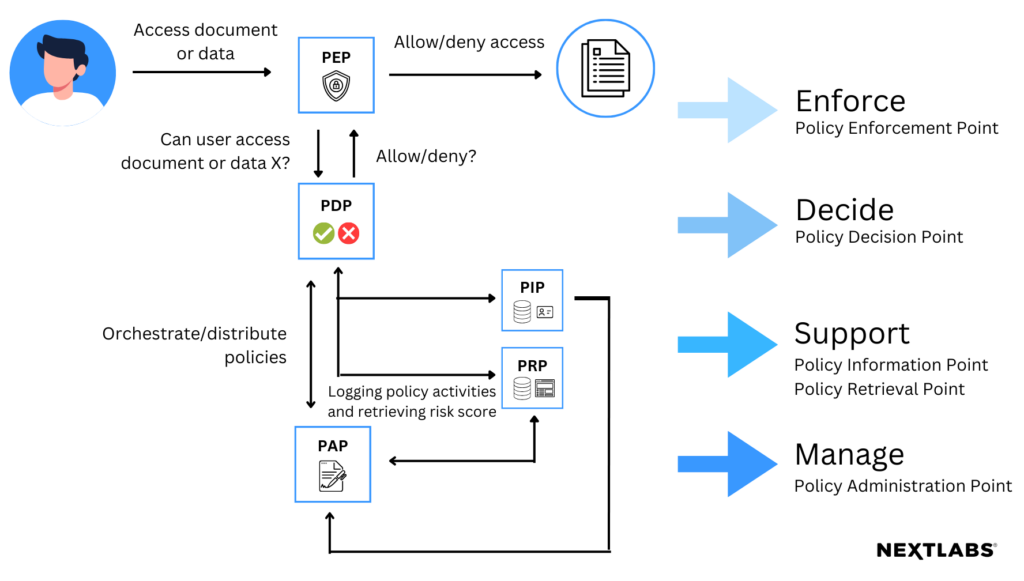In attribute-based access control (ABAC) architecture, the Policy Administration Point (PAP) plays a critical role in defining, managing, and updating access control policies. The PAP is well understood as an essential part of the ABAC architecture and is responsible for policy creation and administration, including specifying rules, conditions, and relationships between various attributes.
ABAC comes with a recommended architecture which is as follows:
- The PEP or Policy Enforcement Point is responsible for protecting the apps & data you want to apply ABAC to. The PEP inspects the request and generates an authorization request from which it sends to the PDP.
- The PDP or Policy Decision Point is the brain of the architecture. This is the piece which evaluates incoming requests against policies it has been configured with. The PDP returns a Permit/ Deny decision. The PDP may also use PIPs to retrieve missing metadata.
- The PIP or Policy Information Point bridges the PDP to external sources of attributes e.g. LDAP or databases.
- The PAP or Policy Administration Point feeds policy to the PDP. It provides a centralize depository to manage policy especially for the enterprise architecture.
How Does a Policy Administration Point Work?
The PAP serves as the centralized command center for the management of access control policies. Its primary function is to empower administrators by providing a unified interface for the creation, modification, and administration of policies that govern access to resources. Administrators interact with the PAP to define rules and conditions based on diverse attributes such as user roles, resource properties, and environmental factors. Furthermore, the PAP plays a crucial role in maintaining policy consistency and compliance, as it acts as the focal point for distributing these policies to the Policy Decision Point (PDP) for enforcement throughout the ABAC system.

Why are PAPs Necessary?
Overall, the PAP is essential for ensuring precision, flexibility, and centralized control in the management of access control policies within the ABAC framework. The PAP facilitates dynamic adaptability by allowing swift updates to policies, ensuring that access control aligns with evolving business goals, regulatory requirements, and security best practices, which is particularly vital in today’s dynamic and fast-paced digital environments, where organizations must promptly adjust their security postures to address emerging threats.
To learn more about the other components of the ABAC architecture, read our previous blogs on PIP, PDP, and PEP.


To comment on this post
Login to NextLabs Community
NextLabs seeks to provide helpful resources and easy to digest information on data-centric security related topics. To discuss and share insights on this resource with peers in the data security field, join the NextLabs community.